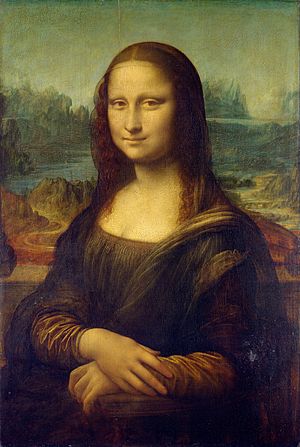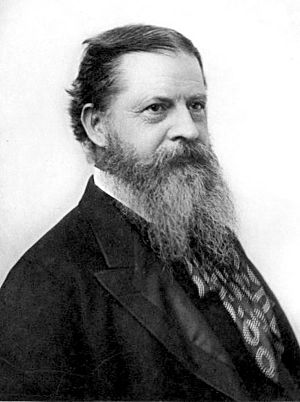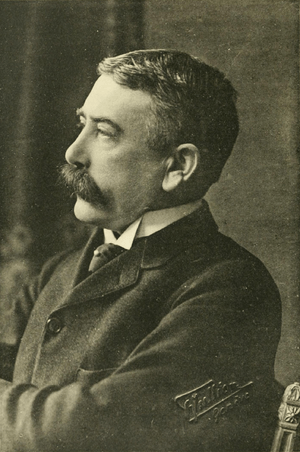Representation (arts) facts for kids
Representation is all about using things that stand in for, or take the place of, something else. Think of it like a picture of a dog: the picture isn't a real dog, but it represents a dog. We use representation to understand and organize the world around us by giving names and meanings to things.

Many thinkers, both old and new, have called humans the "representational animal." This means we are special because we create and use signs – things that stand for something else. Representation is connected to aesthetics (the study of art and beauty) and semiotics (the study of signs and symbols). It's a very broad idea, from a simple stone representing a person to a whole book describing a day in someone's life.
In the world of books and stories, "representation" often means three things:
- To look like or be similar to something.
- To stand in for someone or something.
- To show something again, or "re-present" it.
Ideas about representation started a long time ago with ancient Greek philosophers like Plato and Aristotle. These ideas are still very important today in how we understand language, communication, and how we make sense of the world.
Contents
What is Representation?

To represent something means "to bring it to mind by describing it" or "to be a symbol of it." The word comes from an old Latin word meaning "to place before."
A representation is like a recording. It takes information about a real object and describes it in some way, like a painting or a drawing. How much an artistic representation looks like the real object doesn't change whether it's a representation or not. For example, both the famous Mona Lisa painting and a child's crayon drawing of the same person are representations. Whether you like one more than the other is a matter of taste, not whether it's a representation.
History of Representation
Since ancient times, representation has been key to understanding art, stories, and signs. Plato and Aristotle were important early thinkers who saw art as a form of representation. Aristotle believed that humans naturally represent things, whether through words, pictures, or music. He thought that creating and using signs is what makes humans different from other animals. Aristotle felt that imitating things helps people learn and understand the world.
Plato, however, was more careful about representation. He agreed that art represents life, but he also thought that representations can get in the way of seeing what's truly real. He worried they could create illusions and lead people away from "real things." Because of this, Plato believed that representation needed to be controlled. He worried it could encourage bad feelings or the imitation of evil.
Aristotle said that representation is something humans definitely do. He wrote: "From childhood man has an instinct for representation, and in this respect man differs from the other animals that he is far more imitative and learns his first lessons though imitating things."
Aristotle talked about representation in three ways:
- The object: What is being represented.
- Manner: How it is represented.
- Means: The material used to represent it (like language for stories).
A big part of representation is the connection between the material used and what it represents. For example, how can a stone represent a person? And how do we all agree on what that representation means?
We only understand reality through representations of it, like through stories, talks, or images. We don't have a direct way to see reality without these filters. But just because we see reality through representations doesn't mean we don't see reality at all. Reality is always bigger and more complicated than any system of representation can fully capture. That's why humans have created so many different ways of trying to represent it throughout history.
Because of this, people have often felt that language isn't enough to express reality. So, they've created new ways to represent things. We need new ways of seeing reality because we only know reality through how it's represented. This has led to many different art styles and ideas, like abstraction, realism, and modernism.
Modern Ideas About Representation
Following Plato's caution, many people today are aware of how politics and beliefs can influence representations. It's impossible to separate representations from the culture and society that creates them. In today's world, there are often rules about what can be represented and who can see certain representations.
For example, movie rating systems (like M or R ratings) show how society tries to control and change representations. This is often done to promote certain ideas and values. However, even with these rules, representations can take on their own life once they are shared with the public. They can't always be given one fixed meaning, because there's always a difference between what was intended and what is understood.
When we communicate using representations, problems like misunderstandings or errors can happen. The accuracy of representations isn't guaranteed. They work within a system of signs that are always connected to other signs and cultural factors. How we understand representations depends on rules for interpreting them. Many of these rules are informally agreed upon in a society and have developed over many years. But these understandings can change over time, in different places, among different people, and in different situations.
So, how does this "agreement" or understanding of representation happen? Experts in semiotics (the study of signs) generally agree that representational relationships can be put into three main groups: icon, symbol, and index.
Objects and people don't have a fixed meaning. Their meanings are created by humans within their culture. This way of looking at representation helps us understand how language and knowledge systems create and share meanings. Representation is simply the process of building these meanings.
Peirce and Representation
Charles Sanders Peirce (1839–1914) was a very smart thinker who studied logic, math, and science. He also started a way of thinking called pragmatism. Peirce's main ideas were about logic and representation.
He believed that "all this universe is full of signs." He thought that all thinking happens through signs. He said there are three main parts to how signs work: 1. The sign itself (what represents). 2. The object (what the sign represents). 3. The interpretant (the meaning or idea that comes from the sign).
Even if a sign represents something just by looking like it, or by being factually connected, it's still a sign because it can be understood. A sign depends on its object in a way that allows for understanding. This understanding then creates another sign, and so on, in a never-ending process of meaning-making.
Peirce said that to know what a sign refers to, our minds need some experience with the sign's object. This experience is "collateral" – it's outside of the sign itself. For example, when you read a novel, you use your own experiences to understand the characters and events, even if they are fictional.
Peirce believed there are three main ways signs represent objects:
- Icon
An icon represents something by looking like it or resembling it. Think of a portrait painting – it looks like the person it represents. Icons don't need a real connection to their object; they just need to share a quality. A photograph is an icon because it looks like its object, but it's also an index (see below) because it has a real connection to it (it was taken from the actual object).
- Index
An index represents something through a direct, factual connection, often cause and effect. If you see smoke, it's an index of fire because smoke is caused by fire. The connection is real, no matter if it looks like the object or how it's interpreted. Pointing a finger is an index because it directly points to something.
- Symbol
A symbol represents something based on habits, rules, or agreements. Symbols can be natural, cultural, or abstract. They depend on how they will be understood. They don't rely on looking like their object or having a direct connection. For example, the word "car" is a symbol. We all agree in our culture that this word represents a vehicle with wheels, an engine, and seats. This agreement allows us to communicate. When you write the word "car," people in English-speaking countries know what it means because it's a shared cultural symbol.
Saussure and Representation
The Swiss linguist Ferdinand de Saussure (1857–1913) was very important in developing the study of signs (semiotics). He argued that language is a system of signs that we need to understand to truly grasp how language works. Semiotics looks at the signs and types of representation humans use to share feelings, ideas, and thoughts.
Saussure said that before we can use a word like "tree," we first have to have a mental picture or idea of a tree in our minds.
He said two things are key to understanding signs:
- The signified: This is the mental idea or concept (like your idea of a tree).
- The signifier: This is the actual word or sound (like the letters "t-r-e-e" or the sound of the word).
The signifier is the word or sound; the signified is the idea or representation it brings to mind.
Saussure pointed out that signs:
- Are arbitrary: There's no natural link between the word "tree" and the actual tree. We just agree it means that.
- Are relational: We understand words in relation to other words. We understand "up" because we know "down."
- Make up our world: We live inside a system of signs and language.
Saussure believed that the meaning of a sign is arbitrary. For example, the word "sister" (the signifier) might mean a female sibling to someone in Australia. But to an Aboriginal Australian, "sister" might mean a close friend they have a special bond with. This shows that what a signifier represents depends completely on a person's culture, language, and background.
Saussure argued that if words were just labels for existing things, translating between languages would be easy. But it's often very difficult, which shows that words trigger different ideas or representations depending on the person and their language. Even within one language, many words can refer to the same thing but represent different interpretations. For example, one person might call a place their "work," while another calls the same place their "favorite restaurant."
Saussure also said that a main job of written language is to "represent" spoken language. However, many languages don't have writing systems that perfectly match the sounds they make. For example, the letter "a" in English sounds different in "apple," "gate," and "father." This means that how a word is written doesn't always perfectly represent how it's pronounced. This can lead to misunderstandings of sounds and suggests that writing systems don't always fully represent the true pronunciation of words.




